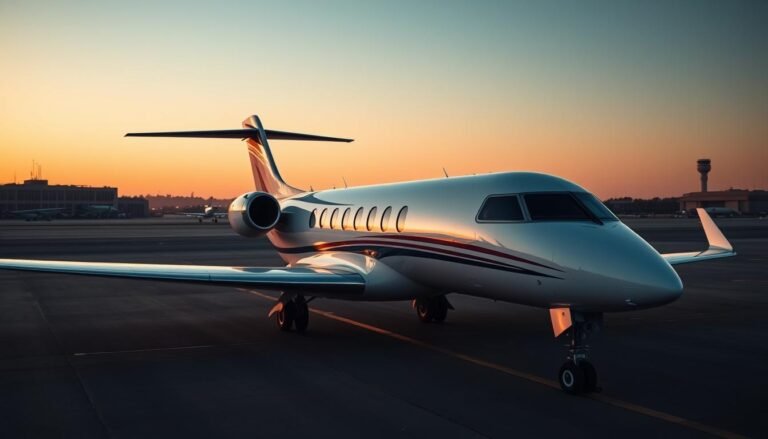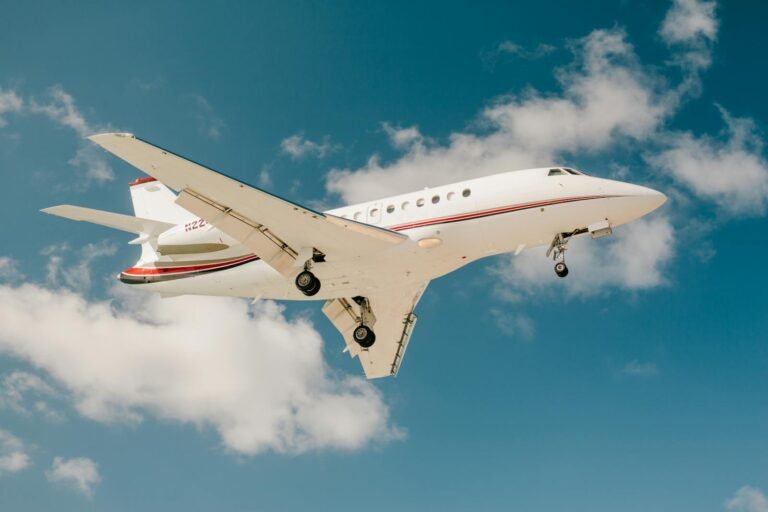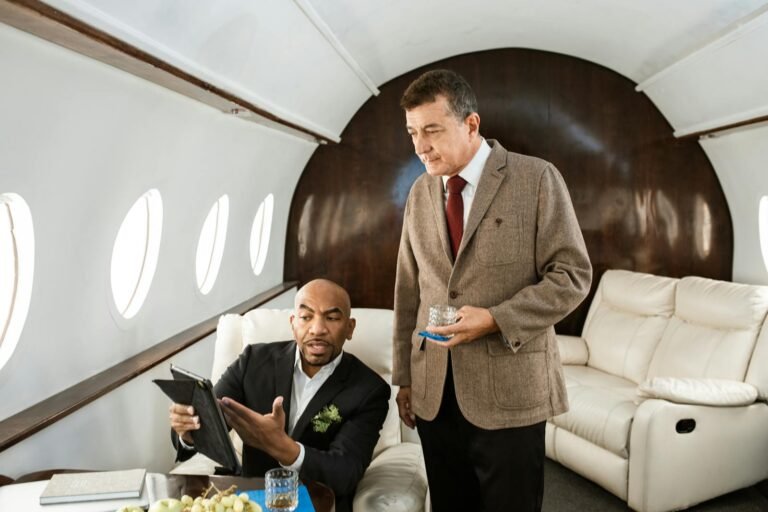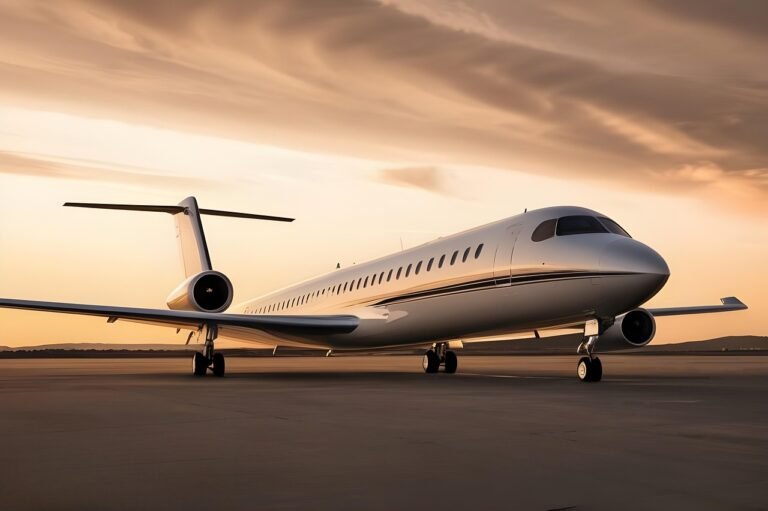Private terminals can get you from curb to cabin in just 5–10 minutes. Most people arrive 15–30 minutes before their flight. This saves hours on every trip for both executives and families.
This guide shows the perks of charter flights. It explains how private air travel offers time control, privacy, and comfort. In the U.S., private jets provide on-demand routes, quiet cabins, and personalized service.
Private charter flights start with a smooth ground experience. Fixed-base operators make screening and boarding quick, often skipping TSA lines for smaller planes. On board, you pick your departure time and fly directly to your destination. You step off the plane right after landing, avoiding crowded terminals and gate holds.
Comfort is standard on private flights. You’ll find calm cabins, fast Wi-Fi, and tailored catering. There’s also flexible seating for everyone, including pets and gear. Prices vary from $2,000 to $18,000+ per hour, depending on the aircraft and route.
These benefits make charter flights appealing. They let travelers control their schedule, keep conversations private, and enjoy a refined journey. This is true for travel within the U.S. and beyond.
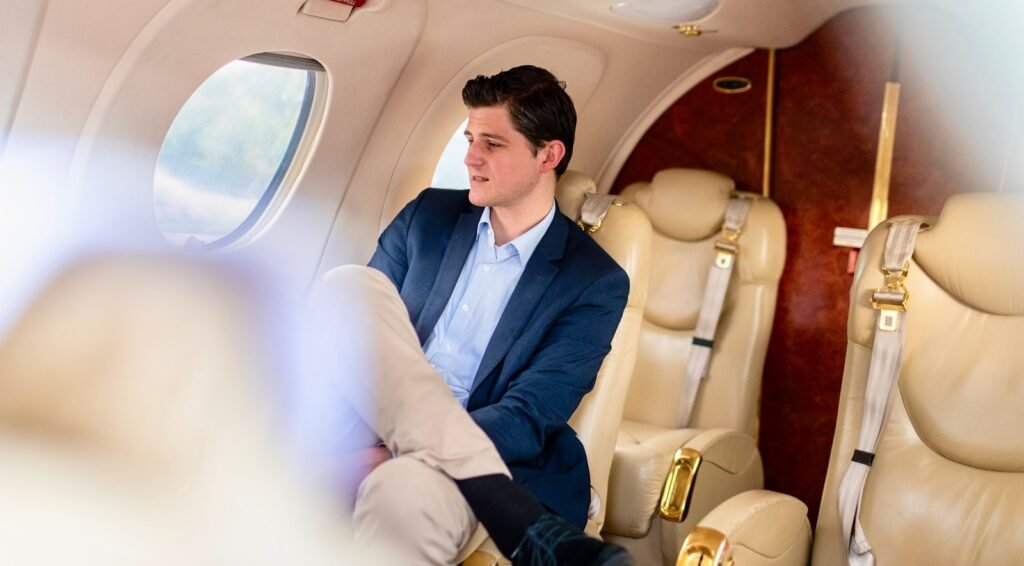
What You Should Remember
- Arrive 15–30 minutes before departure and board in 5–10 minutes via private terminals.
- Direct routing and access to smaller airports cut typical travel time by 2–4 hours.
- Privacy supports confidential work, quiet cabins, and focused in‑flight productivity.
- Customized service—Wi‑Fi, gourmet catering, and tailored seating—enhances comfort.
- Fewer restrictions for pets, sporting gear, and bulky equipment simplify planning.
- Transparent hourly pricing—from about $2,000 to $18,000+—scales with aircraft and route.
What Is a Charter Flight and How Private Aviation Works
Travelers new to private aviation often ask, “What is a charter flight?” It’s a trip you book on your terms. You choose the date, time, route, and experience you want. The aircraft is picked based on your needs, from turboprops to large jets.
With a dedicated crew, you can customize everything. This includes catering, seating, and technology. Entertainment, Wi-Fi, and special diets are arranged for a smooth start and quiet flight.
Charter airline vs. private jet charter: on-demand flexibility
Choosing between a charter airline and a private jet depends on what you want. A charter airline offers flexible schedules for groups. A private jet charter lets you rent a specific aircraft for a unique route and service.
You can pick your departure times and avoid layovers. You can also customize the menu and amenities. This means a personalized experience with less waiting on the ground.
Fixed-base operators (FBOs) and private terminals explained
Most trips start and end at private terminals FBO. These places are separate from the main terminal. They make arrival and boarding quick, often in 5–10 minutes.
For light and midsize aircraft, there’s no TSA screening. This makes the pre-flight process faster.
- Quiet lounges, dedicated staff, and discreet boarding gates
- Direct ramp access for swift departures and arrivals
- Catering handoffs, pet handling, and baggage assistance
When a charter plane is the right fit versus full ownership
Private jet charter is a good option for those who want flexibility without the costs of owning a plane. You pay per trip and choose the aircraft size for each mission. This works for both short and long flights.
Owning a plane is best for those who fly often and need guaranteed access. It allows for custom interiors. For most people, charter offers freedom and control over costs while keeping privacy and comfort.
Time Savings and Scheduling Flexibility for Business and Leisure
Private aviation saves time for both business leaders and families. It offers quick access, tailored schedules, and direct routes. This means you save time without losing comfort or privacy.

Door-to-door efficiency: arrive 15–30 minutes before departure
Travelers can arrive 15–30 minutes before their flight and board easily. Baggage is taken care of right at the curb. Security is private, and boarding is quick, usually in five to ten minutes.
This makes starting your trip calm and on time. It helps keep your busy schedule in check.
Direct routing with no layovers or gate holds
Private flights take the most direct routes, skipping busy airports. They adjust departure times to avoid delays. Arrivals go straight to the ramp after landing.
This means fewer delays. Your meetings stay on schedule, and connections are secure.
Using smaller regional airports closer to your destination
Traveling to smaller airports gets you closer to your destination. This cuts down on travel time. FBO teams make every step faster.
This saves even more time, which is valuable when traffic can add an hour or more.
Typical time saved versus commercial: 2–4 hours per trip
Private flights save 2–4 hours per trip compared to commercial flights. For example, New York to Miami can save two to three hours. This extra time can mean more meetings or a quicker return home.
- Flexible slots and short-notice departures safeguard mission-critical plans.
- Direct routing private aviation reduces missed connections and overnight stays.
- Smaller regional airports limit road time and streamline post-landing transitions.
Privacy, Comfort, and Personalized Service On Board
Travelers want a calm, personal space from start to finish. Private flights offer just that. They provide privacy, refined service, and luxury that fits each trip’s needs.
Confidential meetings and quiet cabins without announcements
The cabin is a quiet place for focus. Doors shut, and there’s no noise to disturb you. Teams can work, talk business, or relax without any interruptions.
There’s also Wi‑Fi for secure calls and work. This keeps your meetings private and productive.
Privacy is key from start to finish. Crews keep a respectful distance. They make sure your space is private for important talks and rest.
Gourmet catering, refined beverages, and tailored amenities
Menus are made just for you, with food and drinks that fit your taste. From fresh produce to special wines, every choice is yours. The service is top-notch, too.
A concierge helps with special requests and changes. They make sure your trip goes smoothly. Learn more about their personalized service for your needs.
Spacious seating, Wi‑Fi, and entertainment suited to your group
Seats are comfy and there’s room to move. You can work, eat, or sleep easily. Entertainment systems are set up for your group, and Wi‑Fi keeps you connected.
Private flights also cater to pets and extra items. This makes every trip quiet and comfortable. It’s a place where privacy and luxury make every mile special.
Cost Considerations: When Chartering Delivers Value
Travelers look at charter rates and compare them to time saved, privacy, and control. They see if the aircraft and route match their trip goals. This helps them choose the right plane and plan their trip.
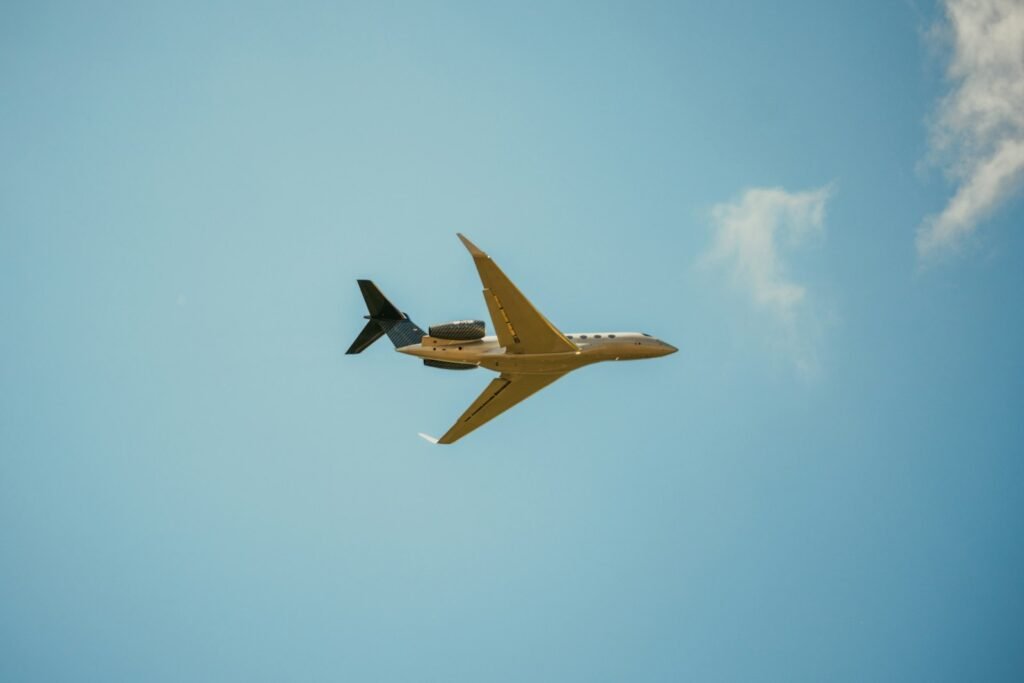
Typical hourly rates and what drives price (aircraft size, route, wait time)
Light jets start at about $4,000 to $6,000 an hour. Midsize jets are $7,000 to $10,000+, and large jets over $20,000. Routes like New York to Palm Beach can cost more because of high demand.
Prices are influenced by aircraft size, airport, crew wait, and amenities. Longer flights, de-icing, and last-minute requests also add to the cost. For more details, check out this guide on private jet costs and benefits.
Group travel economics vs. buying multiple first-class seats
Chartering a plane means renting the whole aircraft. This can be cheaper than buying several first-class tickets. Teams get to travel together, saving time and money.
For solo travelers on long flights, first class on a commercial flight might be cheaper. But, chartering offers more control and speed, which can be worth it for those in a hurry.
Empty legs, shared charters, and membership options
Empty leg flights offer discounts for travelers with flexible plans. Sharing a charter can also reduce costs without losing the private experience.
Memberships provide fixed rates and access. Rewards from premium cards can also lower costs. Booking early and knowing what’s included helps avoid extra fees.
benefits of charter flights
For those who value luxury, charter flights offer a world of difference. From the moment you step into your car, the journey begins. You arrive 15–30 minutes early, clearing formalities in no time. Then, you board fast, skipping the long lines at private terminals.
Direct flights and quick exits mean your trip is shorter. You’ll save two to four hours, thanks to flying directly to your destination. Plus, you can land at regional airports, closer to your final destination.
On the plane, you’ll find flexibility, privacy, and comfort. The quiet cabins are perfect for work or private conversations. The crew will customize your meal and drinks, and the seats offer plenty of legroom, Wi-Fi, and space to move.
You have full control over your trip. Pick your flight times, choose who comes with you, and change plans easily. This flexibility extends to your luggage too. You can bring pets, golf bags, skis, and more without the hassle of TSA rules on smaller planes.
Support teams handle all the details, from ground transfers to weather updates. This ensures a smooth journey. You’ll enjoy fast boarding, quick turnaround times, and a cabin made for rest or work. For those who value precision, charter flights offer the perfect blend of time, service, and access.
Charter Flights vs. First Class: Key Differences That Matter
Travelers often choose between charter flights and first class. The main differences are control, privacy, and personalized service. These differences show up in everything from when you fly to how your bags and pets are treated.
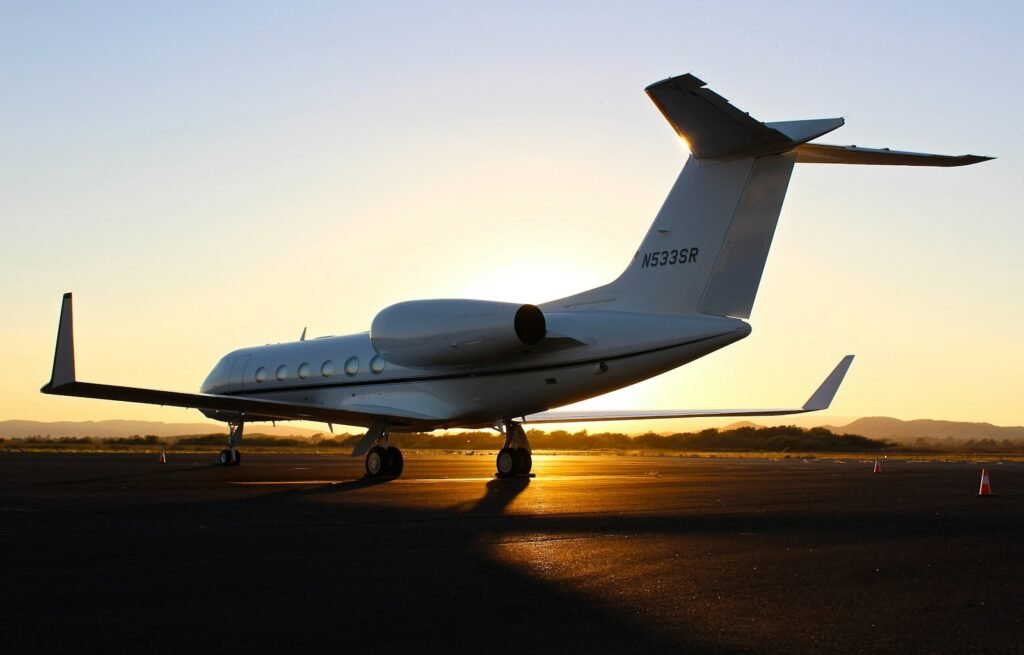
Control of the itinerary vs. airline schedules and layovers
Charter flights give you the freedom to choose your flight times and airports. You can also skip layovers. First class, on the other hand, sticks to the airline’s schedule and might face delays.
Charter flights use smaller airports and private terminals. This means you spend less time getting from the airport to your destination. This is a big plus for trips with multiple stops.
Avoiding crowds, long security lines, and congested terminals
Private flights take off from private terminals, avoiding the crowds and noise of public airports. First class passengers, on the other hand, go through regular TSA lines and public areas. This makes the pre-flight experience much calmer.
Amenities and personalization: private crew, bespoke service
Private jets offer a level of service that’s hard to beat. Crews can customize your menu, adjust the cabin temperature, and arrange ground transport. You can even request specific wines or a quiet area for work.
First class on airlines like Delta, American, or United is also luxurious. But it can’t match the personalized service of a private jet.
Baggage, pets, and special equipment: fewer restrictions
Private aviation has more flexible rules for baggage and pets. You can bring golf clubs, skis, camera equipment, and musical instruments without hassle. First class has limits and fees, but it’s better than economy.
These differences are key for families, athletes, and production teams. They need to bring special gear and pets easily.
- Itinerary control: set your time, route, and airport.
- Terminal flow: avoid crowds and lengthy lines.
- Service depth: private crew with bespoke touches.
- Carriage ease: simpler rules for gear, pets, and oversized items.
Choosing between charter flights and first class depends on your needs. Do you want control and personal service? Or do you prioritize keeping your gear and pets close?
Productivity and Stress Reduction for Executives and Teams
Executives feel more in control when flights fit their schedule. Smaller airports and direct routes save time. This makes travel less stressful.
Flight coordinators handle all the details. They arrange catering, ground transfers, and timing. This way, teams arrive focused and ready to work.
Quiet cabins on planes help teams concentrate. They can review important documents and practice presentations without distractions. This makes it easier to rest and stay energized for meetings.
Modern planes have Wi-Fi for teams to work together in real-time. They can share documents, make video calls, and update dashboards during the flight. This turns travel time into productive work hours.
Coordinated departures keep busy days on schedule. This reduces the chance of delays or cancellations. It also makes it easier for teams to travel together, aligning roles and transporting equipment smoothly.
Flight crews customize the experience to fit the itinerary. They adjust lighting, seating, and service to match the activity. This helps maintain focus and momentum from the plane to the office.
For confidential meetings, planes with private areas and soundproofing offer extra security. With Wi-Fi, teams can have secure briefings and make quick changes. This keeps the work moving without compromising privacy.
Accessibility, Baggage, and Special Accommodations
Private aviation makes travel easier and more private. Crews help from start to finish, setting up cabins for your needs. This means less hassle and more comfort on your journey.
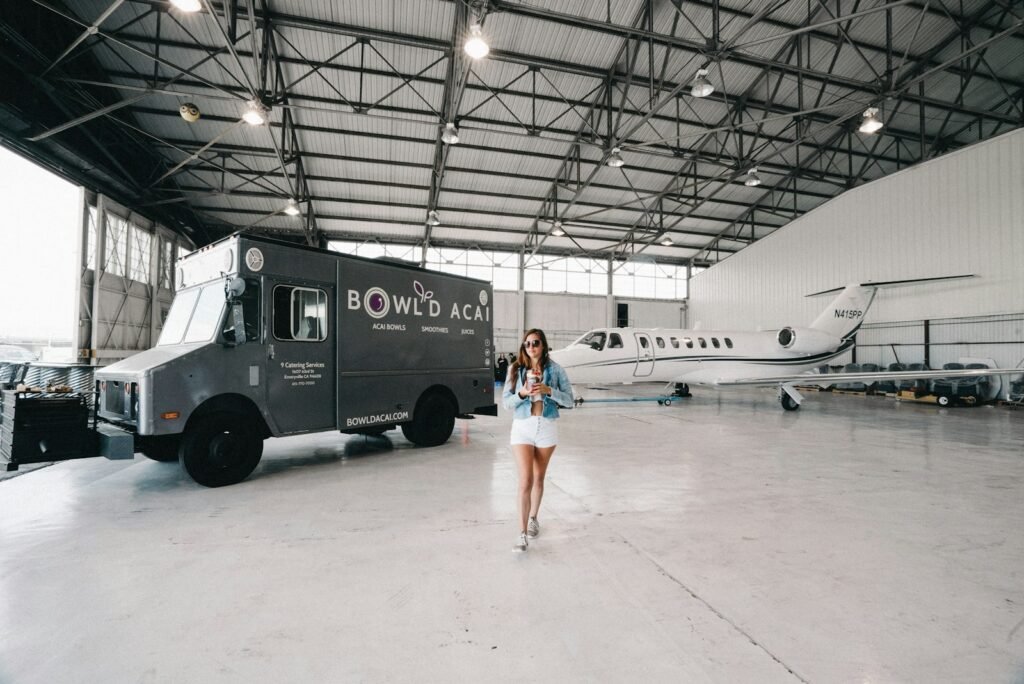
Bringing pets, sporting gear, and bulky items with confidence
Pet-friendly flights let you bring your pets along. This reduces stress for both you and your pets. For bulky items, private jets make loading easy, keeping your gear safe.
- Cabin and hold space tailored to oversize gear and hard cases.
- Direct supervision of load and unload for high-value equipment.
- Flexible weight and dimension policies compared with commercial rules.
Support for elderly, injured, or wheelchair users
Operators offer discreet care from start to finish. They handle wheelchair access and mobility aids with care. This follows the Air Carrier Access Act, ensuring your comfort and privacy.
- Prearranged transfers, low-step boarding, and lift availability where required.
- Cabin layouts that allow easy movement and seating comfort.
- Chain-of-custody care for wheelchairs, scooters, and medical devices.
Faster check-ins and minimized ground transport logistics
Private terminals make arrival and boarding quick and easy. You can arrive just before your flight and depart from local airports. This saves time and makes your trip more enjoyable.
- Dedicated lounges with rapid document checks and no crowded lines.
- Curbside-to-aircraft flow that reduces waiting and transfers.
- Scheduling built around the traveler, ideal for families and gear-heavy trips.
Choosing a Charter Partner: Safety, Transparency, and Reach
Finding the right private aviation ally is key. Look for safety, clear terms, and access to aircraft worldwide. Travelers want transparent pricing, quick service, and consistent quality, even when it’s busy.
Clear pricing structures and what’s included (catering, Wi‑Fi, ground)
Seek out clear pricing that lists everything. A good quote should include catering, Wi-Fi, de-icing, and more. This helps avoid surprises, even during holidays or bad weather.
Check safety and terms guidelines, like this guide on choosing a charter operator. Make sure to confirm policies on cancellations and peak periods.
Aircraft selection: turboprop, light, midsize, heavy cabin
Choose the right aircraft for your trip. Consider the route, runway, group size, and baggage. Turboprops are great for short trips, while light jets offer value for 4-8 people. Midsize jets provide more comfort and range, and heavy jets are best for long trips.
- Short regional routes: turboprops for efficiency and local airfield access
- Cost‑conscious groups: light jets balancing speed and budget
- Longer itineraries: midsize jets for range and cabin height
- Global crossings: heavy cabins with sleep‑ready seating and advanced Wi‑Fi
Villiers Jet – Flexible Private Charters with Global Access
Villiers Jet offers flexible, on-demand travel with a wide fleet. They match aircraft quickly across the globe. This approach supports clear pricing and fast quotes.
Travelers can quickly compare routes and aircraft with villiers private jet charter. They can also customize services like catering and ground transfers. Villiers jets use smart strategies to save money during busy times.
Comparing operators and evaluating availability during peak seasons
Peak seasons test a provider’s network and clarity. Compare operators based on aircraft selection, speed, safety, and transparency. Memberships can add predictability, but route popularity and amenities affect quotes.
During holidays or last-minute needs, check hold times and substitution policies. A good partner balances clear pricing with reliable access, keeping your plans on track.
Before You Go
Private aviation offers many benefits for travelers in the U.S. It saves time by avoiding long lines and crowded airports. You can fly directly to your destination, saving hours.
Private flights also provide a quiet and comfortable space. You can enjoy Wi-Fi and personalized meals. Plus, you can bring extra luggage, like pets or golf clubs, without hassle.
The cost of private flights varies based on the type of plane and route. But, for groups or urgent trips, it can be very cost-effective. You can even find deals on empty flights or join a membership program.
Choosing charter flights means you have more control over your travel. You can avoid the crowds and long lines at commercial airports. Plus, you get personalized service from start to finish.
Finding the right charter service is key. Look for clear pricing, the right aircraft, and global reach. Companies like Villiers Jet offer top-notch service and meet your needs.
So, if you want luxury and efficiency in your travel, private aviation is the way to go. Just pick a reliable operator, plan your trip, and enjoy flying on your terms.
If this topic interests you, you may also enjoy my post on flying private to Las Vegas, where I cover the best charter choices and what the experience is really like.

